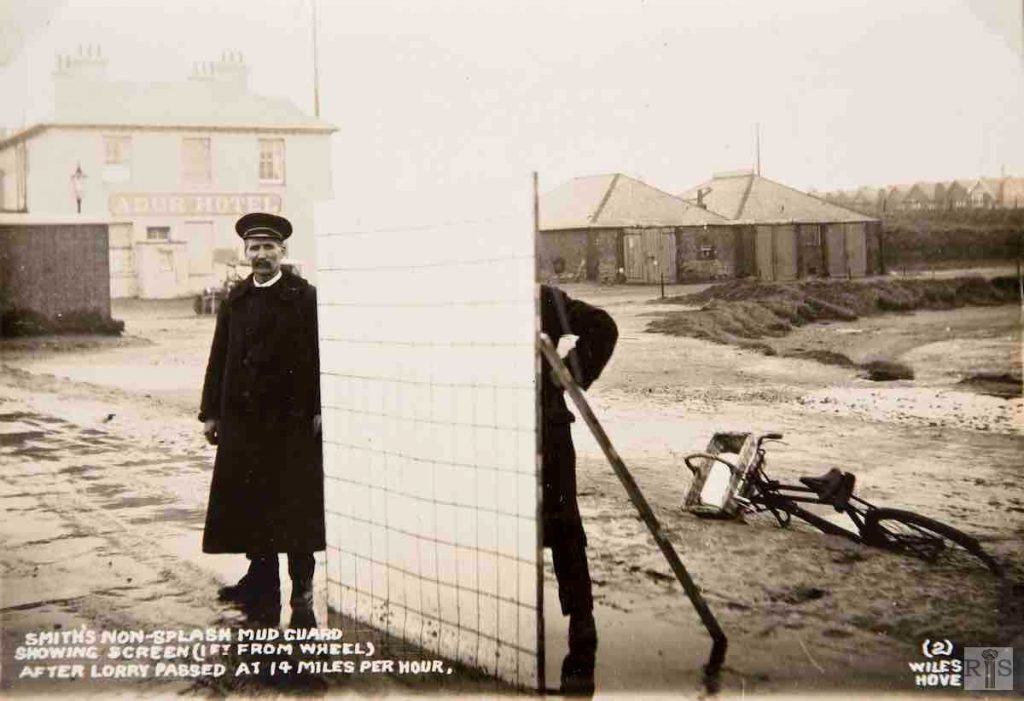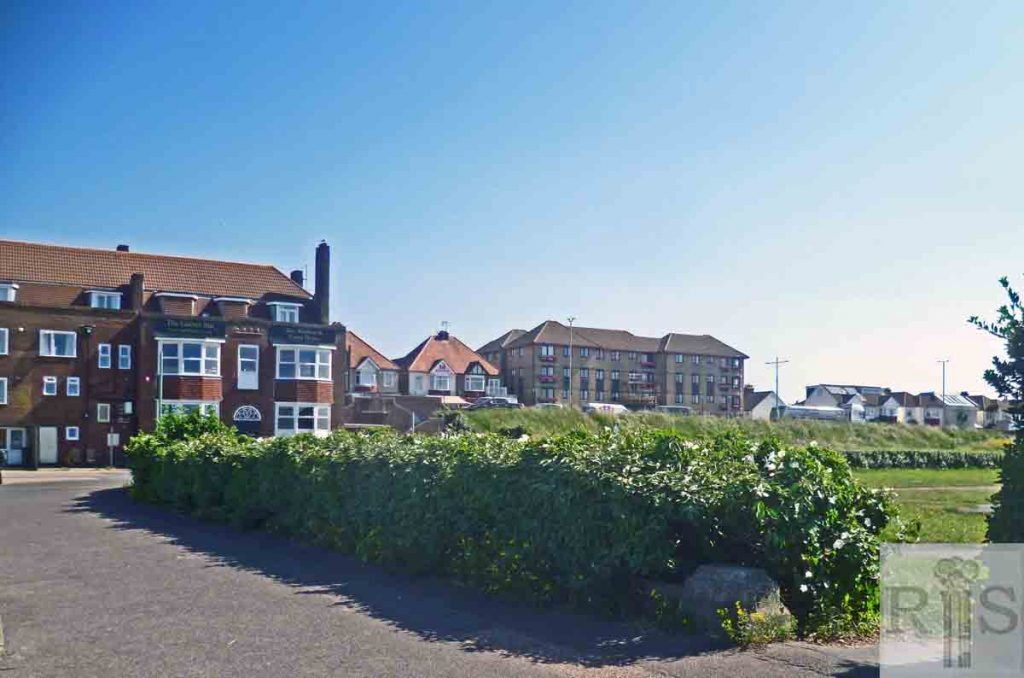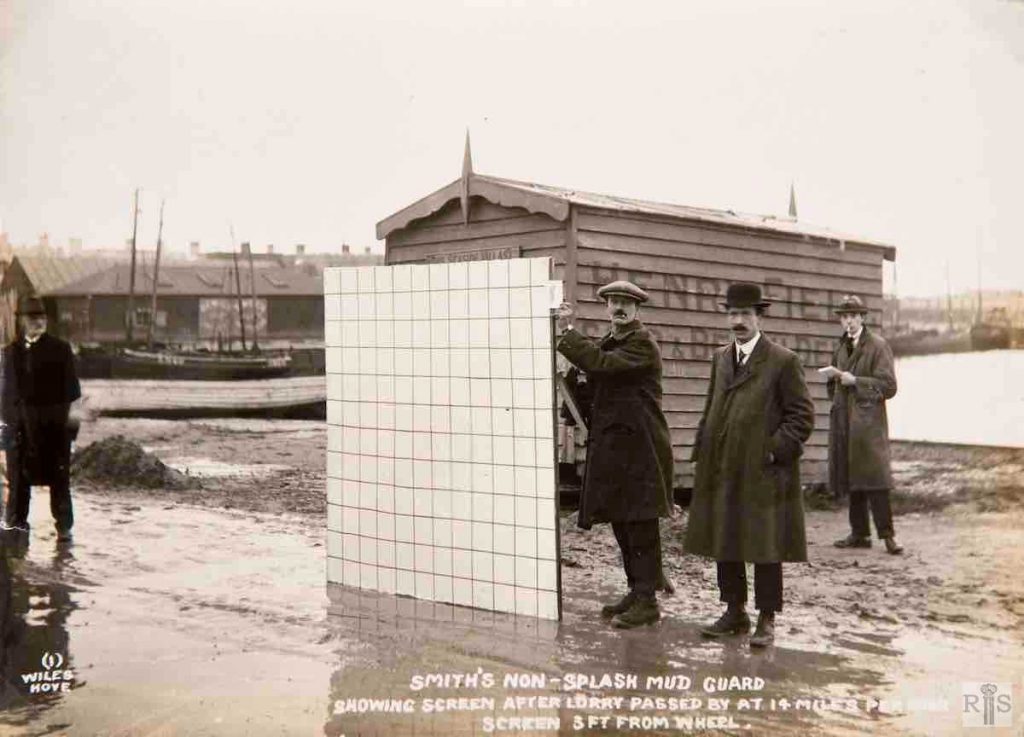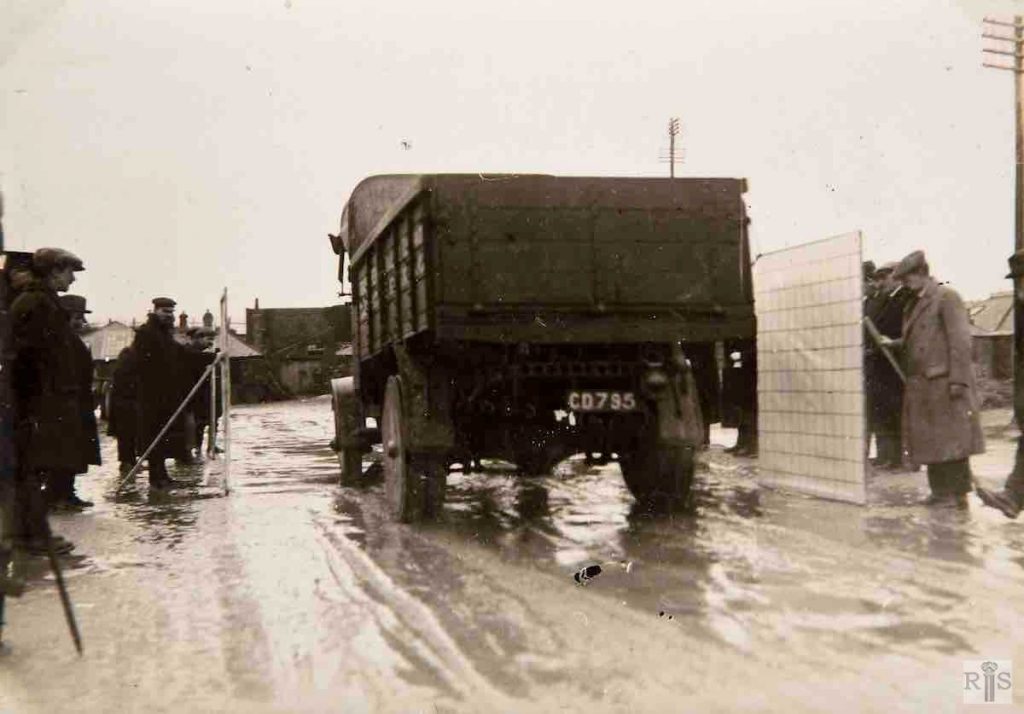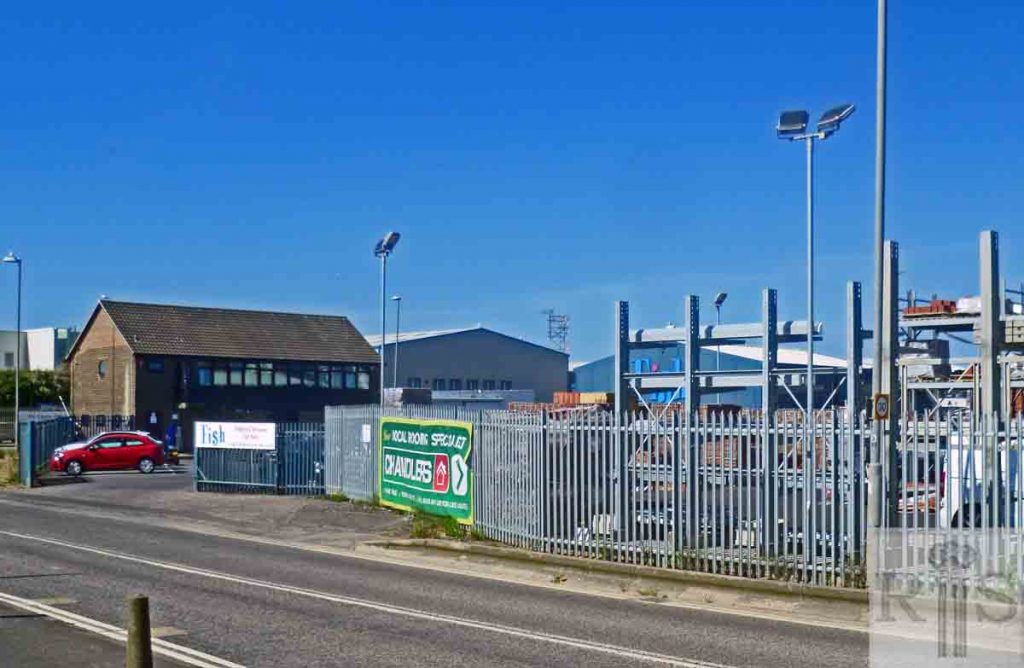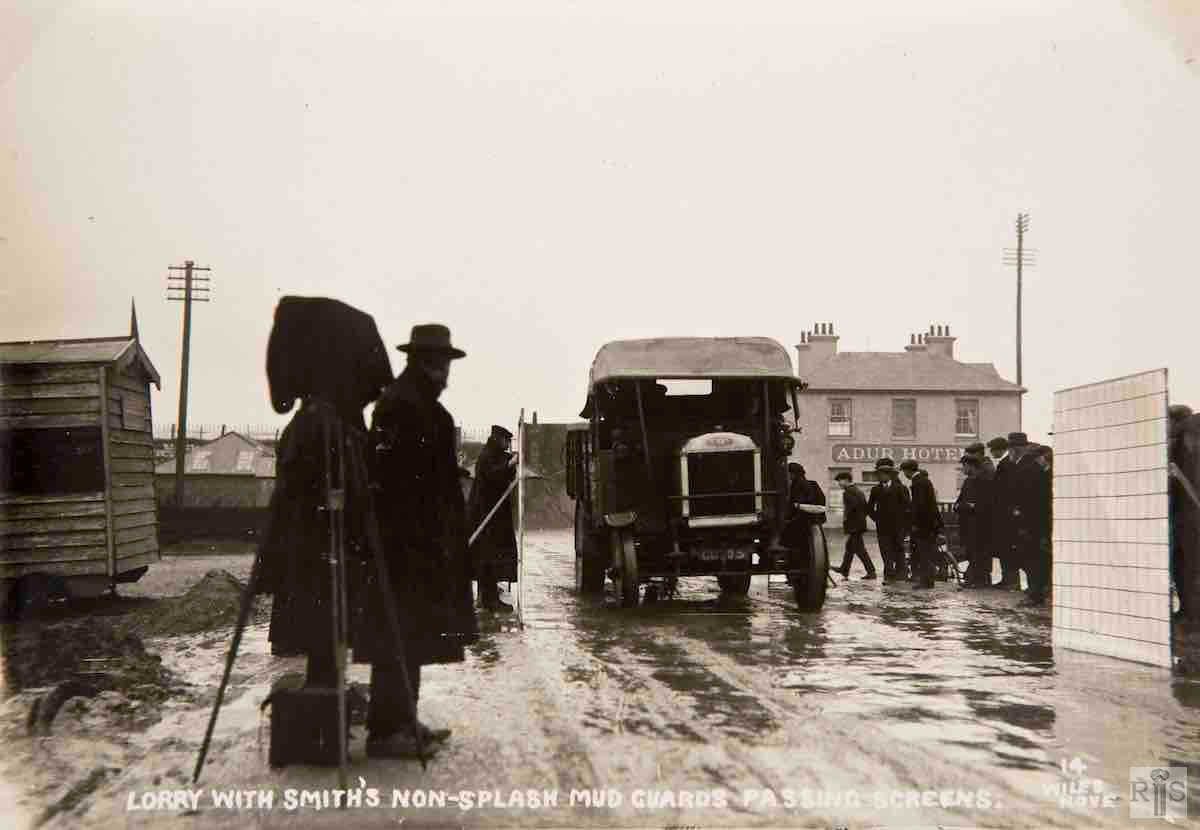
James Gray: On this, and the following page, appear photographs that need some explanation. During the early 1920s, between 1921 and 1926, some experiments were carried out, to test the efficiency of Smith’s Non-Splash Mudguards. Screens were erected at the side of wet muddy roads. Vehicles fitted with normal mudguards of the period were first driven past, badly marking the screen. Then the Dennis lorry, with non-splash mudguards, drove past at the fast speed of 14 miles per hour, throwing up very little dirt. View towards Kingsway and the original Adur Hotel. jgc_15_081
James Gray: In this view can be seen houses on the west side of Tandridge Road. jgc_15_082
2018: The former Adur pub on the south side of Kingsway has been demolished and replaced by another pub, called the Gather Inn. On the north side of Kingsway, to the right of the Gather Inn, the buildings seen in the James Gray image have also gone, replaced by (from left to right) the Lagoon Bait shop, the Kingsway Cafe, a newsagents and, on the corner of Kingsway and Saxon Road, the bulky sheltered housing development of Saxon Court, built in 1987. Hove Lagoon, in the foreground, is a recreational area. (Photographer: Mark Stephenson)
James Gray: This view looks south to Hove Seaside Villas, with the Canal on the right. jgc_15_083
James Gray: Three more photographs [see also jgc_15_085 and 086 on the Kingsway (7) page] of the tests of Smiths Non Splash Mudguards, as described in previous photographs. Looking north along muddy Wharf Road towards Kingsway, with the Adur Hotel hidden behind the lorry. jgc_15_084
2018: This southeastern corner of Aldrington Basin is now the site of Brighton and Newhaven Fish Sales, a wholesale and retail fish market serving a fleet of inshore fishing boats. Modern buildings block the view of Hove Seaside Villas, usually known locally as Millionaires’ Row, the row of beachfront houses built in 1910 which are now among the most expensive properties in the city. (Photographer: Mark Stephenson)


